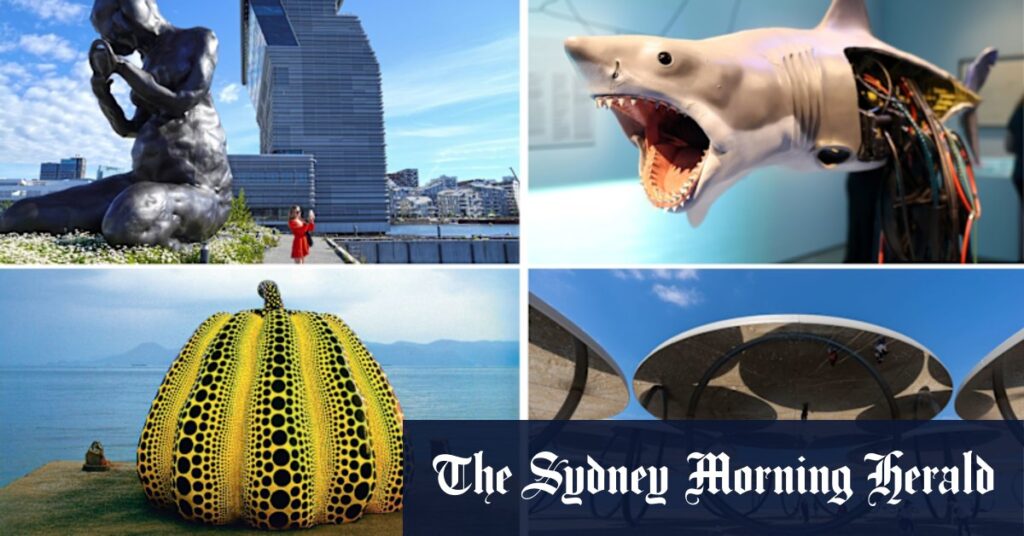
In a world where art capitals like Paris and New York often steal the spotlight, a treasure trove of lesser-known art destinations awaits discovery. These unique locales offer a rich tapestry of culture, history, and creativity, promising an unforgettable experience for art enthusiasts. From the multicultural streets of Los Angeles to the vibrant art scenes of Dakar and Nicosia, these destinations are redefining the global art landscape.
Los Angeles, USA: A Melting Pot of Creativity
Los Angeles is renowned for its role as a global arts and entertainment capital, but beyond the Hollywood glamour lies a city deeply rooted in multiculturalism and creative communities. For an extra memorable experience, visitors can explore specialized collections at the Academy Museum of Motion Pictures, the Hammer Museum, and the Corita Art Center. These venues trace LA’s fascinating history and showcase its diverse artistic expressions.
Doha, Qatar: Art and Architecture in an Islamic Context
Since the opening of the Museum of Islamic Art (MIA) in 2008, Doha has emerged as a hub for Middle Eastern and North African art. The Qatari government has invested significantly in cultural properties, including the National Museum, known for its “desert rose” design inspired by rare sand crystals. The I.M. Pei-designed Museum of Islamic Art itself is an architectural masterpiece, incorporating traditional Islamic motifs into a modern design.
The Mathaf: Arab Museum of Modern Art offers a journey through the desert landscape via installation works celebrating Qatari traditions such as falconry and pearl-diving. A must-see is Olafur Eliasson’s site-specific installation, Shadows travelling on the sea of the day, near northern Qatar’s historic Al Zubara fort.
Bangkok, Thailand: An Expressive Legacy
In Bangkok, art is woven into the very fabric of the city. The local culture’s deep respect for artistic expression is evident in the multifaceted masterworks of royal and religious architecture. The Grand Palace, with its blend of Khmer, Chinese, European, and Renaissance-revival influences, stands as a testament to this artistic heritage.
Bangkok’s contemporary art scene is equally vibrant, with public urban installations and private galleries offering free access to art lovers. The Bangkok Art and Culture Centre (BACC) and the Thailand Creative & Design Centre (TCDC) are hubs for young creatives. Visitors can explore graffiti-covered lanes in Chinatown’s Talat Noi and the edgy “creative park” of Chang Chui.
Mallorca, Spain: Miro’s Island Home
Mallorca’s artistic legacy is evident in its stunning architecture and vibrant art scene. The magnificent cathedral, La Seu, features shimmering stained-glass and a fantastical baldachin by Antoni Gaudi. The island’s art museums, such as Museu Fundacion Juan March and Es Baluard, offer thought-provoking contemporary art and sculpture.
Joan Miro, a celebrated artist, found inspiration in Mallorca’s landscapes and cultural heritage. His studio in Cala Major provides insight into his life and creativity. A vintage train ride to Soller, Miro’s mother’s birthplace, offers a glimpse into the artist’s world.
Dakar, Senegal: West Africa’s Contemporary Art Capital
Dakar, the unofficial capital of Francophone West Africa, is a vibrant hub for contemporary art. The city’s lively gallery scene and the Museum of Black Civilisations showcase traditional woodcarvings, batik, pottery, and souwere. The Dakar Biennale (Dak’Art) has further cemented the city’s reputation as an international art destination.
American portraitist Kehinde Wiley’s Black Rock Senegal and Loman Pawlitschek’s Loman Art House are notable cultural spaces. On Goree Island, site-specific artworks commemorate the enslaved people who were once shipped across the Atlantic.
Nicosia, Cyprus: Art That Spans the Divide
Nicosia, Europe’s last divided capital, approaches art from both Greek and Turkish perspectives. Young Cypriot artists are using creativity to bridge the divide between the two communities. Funding from the UN and other international bodies has bolstered art projects on both sides of the Green Line.
The Nicosia Municipal Arts Centre (NiMAC) and Side Streets in the north explore language, art, and culture. Small galleries and street art around the Green Line offer a contemporary counterpoint to the ancient ceramics and sculptures found in the city’s museums.
Five More Art Destinations Closer to Home
- Wellington, New Zealand: Known for Te Papa Tongarewa, the National Museum, and the World of Wearable Art (WOW), a lavish catwalk event held annually.
- Noumea, New Caledonia: Home to the Renzo Piano-designed Tjibaou Culture Centre, showcasing indigenous Kanak culture.
- Melbourne, Australia: Famous for its laneway art and cultural institutions like the National Gallery of Victoria and the Australian Centre for the Moving Image.
- Central and Northern Islands, Vanuatu: Known for the unique tradition of sand-drawing, showcased at festivals and the National Museum of Vanuatu.
These destinations, each with its own unique artistic flair, offer a fresh perspective on global art. As the world continues to embrace diverse cultural expressions, these lesser-known hotspots are gaining recognition for their contributions to the art world. Whether you’re an art aficionado or a curious traveler, these locations promise a journey of discovery and inspiration.






